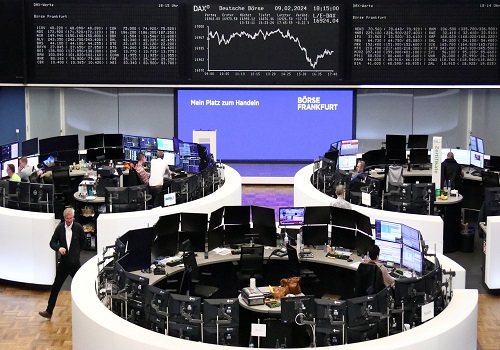Impact of High Interest Rates on Home Buyers Across Segments By Akash Pharande, Managing Director - Pharande Spaces

Follow us Now on Telegram ! Get daily 10 - 12 important updates on Business, Finance and Investment. Join our Telegram Channel
As we await the RBI's monetary policy decision on the repo rate, let us examine the factors involved, and their implications on the Indian housing market.
There can be various reasons for a hike in the repo rate, including inflationary pressure, rising food and fuel prices, excessive growth in the money supply, weakening of the Indian rupee, global economic factors such as a significant increase in international crude oil prices or global market instability, inflation expectations, and overall financial stability concerns.
The real estate sector certainly hopes that the repo rate will remain unchanged because high interest rates have a significant impact on home buying decisions.
Do only affordable housing buyers have to worry about costlier home loans? The dampening effect of high interest rates varies depending on the buyer segment. Let's examine the impact of higher interest rates on the three broadest home buyer segments:
Affordable Homes Segment:
This segment generally caters to buyers with limited income and purchasing power who invariably rely on home loans to finance their purchases. High interest rates have a substantial impact on this segment as they directly affect the EMI payments these buyers must shell out.
As a result, they may either delay their home purchase decisions or opt for even smaller-sized homes in the already compact housing segment to manage the financial obligations. The first eventuality is likelier.
Mid-Range Homes Segment:
The mid-range homes segment typically comprises buyers with moderate income levels and purchasing power across a wide spectrum of the Indian middle class. Buyers in this segment tend to have a relatively higher capacity to handle increased interest rates compared to the affordable segment.
However, they are still sensitive to changes in borrowing costs, especially since this segment has been focusing on the largest homes within their means since the pandemic. The previous trend of beginning with a smaller 'starter home' with a view to later upgrading to a 'forever home' has reduced significantly. These buyers are willing to stretch their budgets to go straight for the forever home.
Higher interest rates have a bigger impact on costlier homes, and mid-range home buyers may have to adjust their budgets or compromise on certain features, size, and location preferences to accommodate the increased cost of borrowing. With the highest aspiration among this buyer segment being large-sized homes with at least two and even three bedrooms, more of them may react to higher interest rates by postponing their purchase decisions.
Luxury Homes Segment:
The luxury homes segment caters to high-income individuals and investors seeking premium properties. Buyers in this segment often have stronger financial stability and greater access to alternative financing options. Consequently, the impact of high interest rates on the luxury segment may differ from that of the affordable and mid-range segments.
Luxury home buyers can also afford higher down payments, reducing their loan-to-value ratios. This mitigates the impact of increased borrowing costs to some extent. Luxury home buyers often prioritize factors such as location, exclusivity, and lifestyle amenities over the cost of borrowing. However, this does not mean that they remain unaffected. High interest rates can still indirectly affect the luxury segment.
If steeper interest rates lead to a marked dip in the stock market and industrial activity, there is invariably a decrease in overall investment sentiment. This pertains even to luxury home buyers. Wealth also spans a wide spectrum, and high-net-worth individuals who grew wealthy through prudent spending, not reckless splurging, remain sensitive to financial implications.
In conclusion:
The RBI primarily considers domestic factors when determining the repo rate. However, the Indian story is closely tied to the global economy., and the US Federal Reserve has strongly indicated that it may need to raise interest rates further to bring down inflation in the US.
When major central banks adopt a tightening monetary policy stance to tackle inflation, it can influence other central banks' decisions, including the RBI. In such cases, the Indian repo rate may be adjusted to maintain consistency with global monetary policy trends.
The real estate market, as well as India's other key industries, are justified in hoping that the upcoming monetary policy remains amenable to lending-driven consumption for a while longer.
Above views are of the author and not of the website kindly read disclaimer










Tag News

India`s Affordable Housing Story - No Happy End in Sight By Akash Pharande, Pharande Spaces
More News

Perspective on Finance Minister`s Announcement on Relief Measures By Mr. Vikash Khandelwal, ...












